The best free cultural &
educational media on the web
- Online Courses
- Certificates
- Degrees & Mini-Degrees
- Audio Books

360 Degree Virtual Tours of the Hagia Sophia
in Architecture , Art , History , Travel | August 23rd, 2021 2 Comments
Last year, when Turkish president Recep Tayyip Erdoğan announced that Hagia Sophia would be reconverted into a mosque, he assured a concerned UNESCO that changes to the 1,500-year-old former cathedral-turned-mosque would have “no negative impact” on its status as World Heritage Site. “A state must make sure that no modification undermines the outstanding universal value of a site listed on its territory,” the world body has said. Claims to the contrary notwithstanding, the “universal value” of the site does seem to have been undermined.
Designated a museum by the secular Turkish Republic in 1934, the site contains hundreds of years of history for both the Christian and Islamic worlds, and the shared heritage between them in the shifting mix of peoples who conquered, settled, and moved through the city first called Byzantium, then Constantinople, then Istanbul.
“The World Heritage site was at the centre of both the Christian Byzantine and Muslim Ottoman empires and is today one of Turkey’s most visited monuments,” Reuters noted last year.
The mosque is open to the public for prayers , and anyone can visit. What they’ll find — as you can see in this recent tour video — is ugly green carpeting covering the floor, and screens, panels, and plywood obscuring the Byzantine Christian art. (The same thing was done in the smaller Hagia Sophia in the city of Trabzon .) These changes are not only distressing for UNESCO, but also for lovers of art and history around the world, myself included, who had hoped to one day see the millennia-and-a-half of blended religious and aesthetic traditions for themselves.
It’s possible Turkish politics will allow Hagia Sophia to return to its status as a museum in the future, restoring its “universal value” for world history and culture. If not, we can still visit the space virtually — as it was until last year — in the 360 degree video views above, both of which allow you to look around in any direction as they play. You can also swivel around a spherical panoramic image at 360 cities .
The BBC video at the top narrates some of the significant features of the incredible building, once the largest church in the world, including its “colored marble from around the Roman Empire” and “10,000 square meters of gold mosaic.” Learn much more about Hagia Sophia history in the video above from Khan Academy’s executive directors (and former deans of art and history), Dr. Steven Zucker and Dr. Beth Harris.
Related Content:
An Introduction to Hagia Sophia: After 85 Years as a Museum, It’s Set to Become a Mosque Again
Hear the Sound of the Hagia Sophia Recreated in Authentic Byzantine Chant
Istanbul Captured in Beautiful Color Images from 1890: The Hagia Sophia, Topkaki Palace’s Imperial Gate & More
Josh Jones is a writer and musician based in Durham, NC. Follow him at @jdmagness
by Josh Jones | Permalink | Comments (2) |
Related posts:
Comments (2), 2 comments so far.
I visited twice in August. At least the green carpet is vacuumed constantly and before pray begins for the handful of worshipers men in dark security-looking uniforms unceremoniously chase people away with larger sanitizing sprayers like mosquitoes. At least the children can have fun jumping over the taught vacuum cords. Lest we get dangerously close to the apse there are long collapsible metal security gates keeping one at a safe distance; not only here in the central part of the nave, but thankfully every other key place available for worship. As an aid to meditation the plush but sensibly piled carpet deadens all sound within the once holy realm as those annoying acoustics are now a thing of the past. Thoughtful for the wheelchair-bound visitor, the old treacherous ramp to the gallery and famed mosaics is closed so no need to worry about accidents. What will they think of next!
Ayasofya, benim evimdir ve izinsiz olarak giren hırsızdır, günahkardır, ve bedel öder. Sözde müslümanların, ibadetlerini, Allah, yıllardır, bu, yüzden kabul etmiyor. Dünyalılar, başka bedeller de ödeyecek. ben göklere ait olan yüce biriyim. Bana muhalefet eden, Allah’a isyan etmiş sayılır. Ayasofya’da kabul olmayan ibadetlerini gösteriş için yapan, sözde müslüman artıkları, değersiz dur, elbet. Ben onları affetmeyeceğim, hakkımı helal etmiyorum. Lanet olsun, malımı mülkümü haince gaspedenlere!
Add a comment
Leave a reply.
Name (required)
Email (required)
XHTML: You can use these tags: <a href="" title=""> <abbr title=""> <acronym title=""> <b> <blockquote cite=""> <cite> <code> <del datetime=""> <em> <i> <q cite=""> <s> <strike> <strong>
Click here to cancel reply.
- 1,700 Free Online Courses
- 200 Online Certificate Programs
- 100+ Online Degree & Mini-Degree Programs
- 1,150 Free Movies
- 1,000 Free Audio Books
- 150+ Best Podcasts
- 800 Free eBooks
- 200 Free Textbooks
- 300 Free Language Lessons
- 150 Free Business Courses
- Free K-12 Education
- Get Our Daily Email
Free Courses
- Art & Art History
- Classics/Ancient World
- Computer Science
- Data Science
- Engineering
- Environment
- Political Science
- Writing & Journalism
- All 1500 Free Courses
- 1000+ MOOCs & Certificate Courses
Receive our Daily Email
Free updates, get our daily email.
Get the best cultural and educational resources on the web curated for you in a daily email. We never spam. Unsubscribe at any time.
FOLLOW ON SOCIAL MEDIA
Free Movies
- 1150 Free Movies Online
- Free Film Noir
- Silent Films
- Documentaries
- Martial Arts/Kung Fu
- Free Hitchcock Films
- Free Charlie Chaplin
- Free John Wayne Movies
- Free Tarkovsky Films
- Free Dziga Vertov
- Free Oscar Winners
- Free Language Lessons
- All Languages
Free eBooks
- 700 Free eBooks
- Free Philosophy eBooks
- The Harvard Classics
- Philip K. Dick Stories
- Neil Gaiman Stories
- David Foster Wallace Stories & Essays
- Hemingway Stories
- Great Gatsby & Other Fitzgerald Novels
- HP Lovecraft
- Edgar Allan Poe
- Free Alice Munro Stories
- Jennifer Egan Stories
- George Saunders Stories
- Hunter S. Thompson Essays
- Joan Didion Essays
- Gabriel Garcia Marquez Stories
- David Sedaris Stories
- Stephen King
- Golden Age Comics
- Free Books by UC Press
- Life Changing Books
Free Audio Books
- 700 Free Audio Books
- Free Audio Books: Fiction
- Free Audio Books: Poetry
- Free Audio Books: Non-Fiction
Free Textbooks
- Free Physics Textbooks
- Free Computer Science Textbooks
- Free Math Textbooks
K-12 Resources
- Free Video Lessons
- Web Resources by Subject
- Quality YouTube Channels
- Teacher Resources
- All Free Kids Resources
Free Art & Images
- All Art Images & Books
- The Rijksmuseum
- Smithsonian
- The Guggenheim
- The National Gallery
- The Whitney
- LA County Museum
- Stanford University
- British Library
- Google Art Project
- French Revolution
- Getty Images
- Guggenheim Art Books
- Met Art Books
- Getty Art Books
- New York Public Library Maps
- Museum of New Zealand
- Smarthistory
- Coloring Books
- All Bach Organ Works
- All of Bach
- 80,000 Classical Music Scores
- Free Classical Music
- Live Classical Music
- 9,000 Grateful Dead Concerts
- Alan Lomax Blues & Folk Archive
Writing Tips
- William Zinsser
- Kurt Vonnegut
- Toni Morrison
- Margaret Atwood
- David Ogilvy
- Billy Wilder
- All posts by date
Personal Finance
- Open Personal Finance
- Amazon Kindle
- Architecture
- Artificial Intelligence
- Beat & Tweets
- Comics/Cartoons
- Current Affairs
- English Language
- Entrepreneurship
- Food & Drink
- Graduation Speech
- How to Learn for Free
- Internet Archive
- Language Lessons
- Most Popular
- Neuroscience
- Photography
- Pretty Much Pop
- Productivity
- UC Berkeley
- Uncategorized
- Video - Arts & Culture
- Video - Politics/Society
- Video - Science
- Video Games
Great Lectures
- Michel Foucault
- Sun Ra at UC Berkeley
- Richard Feynman
- Joseph Campbell
- Jorge Luis Borges
- Leonard Bernstein
- Richard Dawkins
- Buckminster Fuller
- Walter Kaufmann on Existentialism
- Jacques Lacan
- Roland Barthes
- Nobel Lectures by Writers
- Bertrand Russell
- Oxford Philosophy Lectures
Receive our newsletter!
Open Culture scours the web for the best educational media. We find the free courses and audio books you need, the language lessons & educational videos you want, and plenty of enlightenment in between.
Great Recordings
- T.S. Eliot Reads Waste Land
- Sylvia Plath - Ariel
- Joyce Reads Ulysses
- Joyce - Finnegans Wake
- Patti Smith Reads Virginia Woolf
- Albert Einstein
- Charles Bukowski
- Bill Murray
- Fitzgerald Reads Shakespeare
- William Faulkner
- Flannery O'Connor
- Tolkien - The Hobbit
- Allen Ginsberg - Howl
- Dylan Thomas
- Anne Sexton
- John Cheever
- David Foster Wallace
Book Lists By
- Neil deGrasse Tyson
- Ernest Hemingway
- F. Scott Fitzgerald
- Allen Ginsberg
- Patti Smith
- Henry Miller
- Christopher Hitchens
- Joseph Brodsky
- Donald Barthelme
- David Bowie
- Samuel Beckett
- Art Garfunkel
- Marilyn Monroe
- Picks by Female Creatives
- Zadie Smith & Gary Shteyngart
- Lynda Barry
Favorite Movies
- Kurosawa's 100
- David Lynch
- Werner Herzog
- Woody Allen
- Wes Anderson
- Luis Buñuel
- Roger Ebert
- Susan Sontag
- Scorsese Foreign Films
- Philosophy Films
- February 2024
- January 2024
- December 2023
- November 2023
- October 2023
- September 2023
- August 2023
- February 2023
- January 2023
- December 2022
- November 2022
- October 2022
- September 2022
- August 2022
- February 2022
- January 2022
- December 2021
- November 2021
- October 2021
- September 2021
- August 2021
- February 2021
- January 2021
- December 2020
- November 2020
- October 2020
- September 2020
- August 2020
- February 2020
- January 2020
- December 2019
- November 2019
- October 2019
- September 2019
- August 2019
- February 2019
- January 2019
- December 2018
- November 2018
- October 2018
- September 2018
- August 2018
- February 2018
- January 2018
- December 2017
- November 2017
- October 2017
- September 2017
- August 2017
- February 2017
- January 2017
- December 2016
- November 2016
- October 2016
- September 2016
- August 2016
- February 2016
- January 2016
- December 2015
- November 2015
- October 2015
- September 2015
- August 2015
- February 2015
- January 2015
- December 2014
- November 2014
- October 2014
- September 2014
- August 2014
- February 2014
- January 2014
- December 2013
- November 2013
- October 2013
- September 2013
- August 2013
- February 2013
- January 2013
- December 2012
- November 2012
- October 2012
- September 2012
- August 2012
- February 2012
- January 2012
- December 2011
- November 2011
- October 2011
- September 2011
- August 2011
- February 2011
- January 2011
- December 2010
- November 2010
- October 2010
- September 2010
- August 2010
- February 2010
- January 2010
- December 2009
- November 2009
- October 2009
- September 2009
- August 2009
- February 2009
- January 2009
- December 2008
- November 2008
- October 2008
- September 2008
- August 2008
- February 2008
- January 2008
- December 2007
- November 2007
- October 2007
- September 2007
- August 2007
- February 2007
- January 2007
- December 2006
- November 2006
- October 2006
- September 2006
©2006-2024 Open Culture, LLC. All rights reserved.
- Advertise with Us
- Copyright Policy
- Privacy Policy
- Terms of Use

Haramain Train Increased Number of Trips For Hajj 2024

40 Million ZamZam Water Packs Ready For Hajj 2024

Muslim Population in India Increased by 14.09%, Report
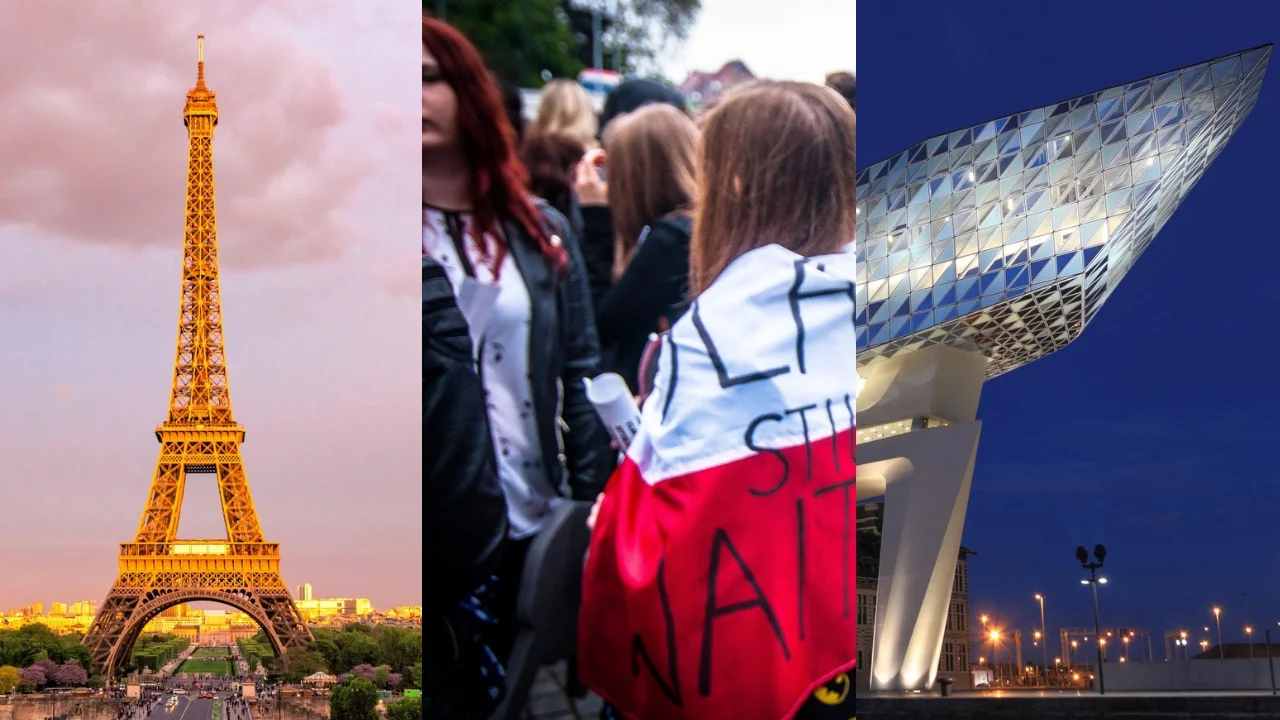
9 Countries You Can’t Visit If You Wear Niqab
- Zenubia Khan
- Zara Mohammed
View Masjid an-Nabawi 360 View (VR)
Masjid an-Nabawi 360 View : Get ready to explore one of the holiest sites in the world with a virtual reality (VR) tour of Masjid an-Nabawi!
Table of Contents
Located in Medina, Saudi Arabia, this mosque is the burial place of the Prophet Muhammad (PBUH), and is considered a sacred pilgrimage site for Muslims around the world. Now you can experience this holy site from the comfort of your own home.
With a 360-degree view of the mosque and its grounds, you can explore the architecture and history of this important religious site.
To go full screen:
- Desktop: Right click on it and click “full screen”
- Mobile: Long press the video and tap “full screen”
Feel the spirituality of the place, and get a better understanding of its significance to millions of Muslims worldwide. Join us on a virtual reality tour of Masjid an-Nabawi, and experience the beauty and majesty of this sacred site.
Exploring the Mosque and Its Grounds
As you enter the mosque, you’ll be greeted by the beautiful architecture and the surrounding gardens. You can explore the various courtyards and gardens that make up this site, and learn more about the history and significance of the place.
You can also explore the prayer areas, and see where the Prophet Muhammad PBUH used to lead prayer.
You can also explore the roof of the mosque, where you’ll be able to take in the spectacular views of the entire place. You can explore all areas of the mosque, and even walk inside some of the walls to see the intricate designs and patterns on the inside.
Explore the mosque and the surrounding areas, and get a better understanding of the history and significance of this important religious site.
Exploring the Architecture and History
As you explore the mosque and its surroundings, you’ll also be able to learn more about the architecture of the place. You can explore the different domes and roofs, and get a better understanding of the significance of these architectural elements.
You can also explore the iwans, which are ornate and decorative doorways and the mihrabs, which are ornate and decorative prayer niches. Visit the various architectural elements and learn more about the significance and history of the mosque.
Exploring the Islamic Art and Decoration
You will discover intricate Islamic artwork and embellishments throughout the mosque and the surrounding area as you explore it. Take a closer look at the mashq, the ornamental gabled roof, and the mashrabiya, the decorative wooden screen.
Explore the muqarnas, the elaborate ceilings and wall decorations. Prepare yourself to be amazed by the artistry and decoration of this important religious site.

- Masjid an-Nabawi
Saudis In Makkah Can now Rent Their Homes To Hajj Pilgrims

34 Women Appointed to Key Roles in Two Holy Mosques in Saudi Arabia
Related posts.
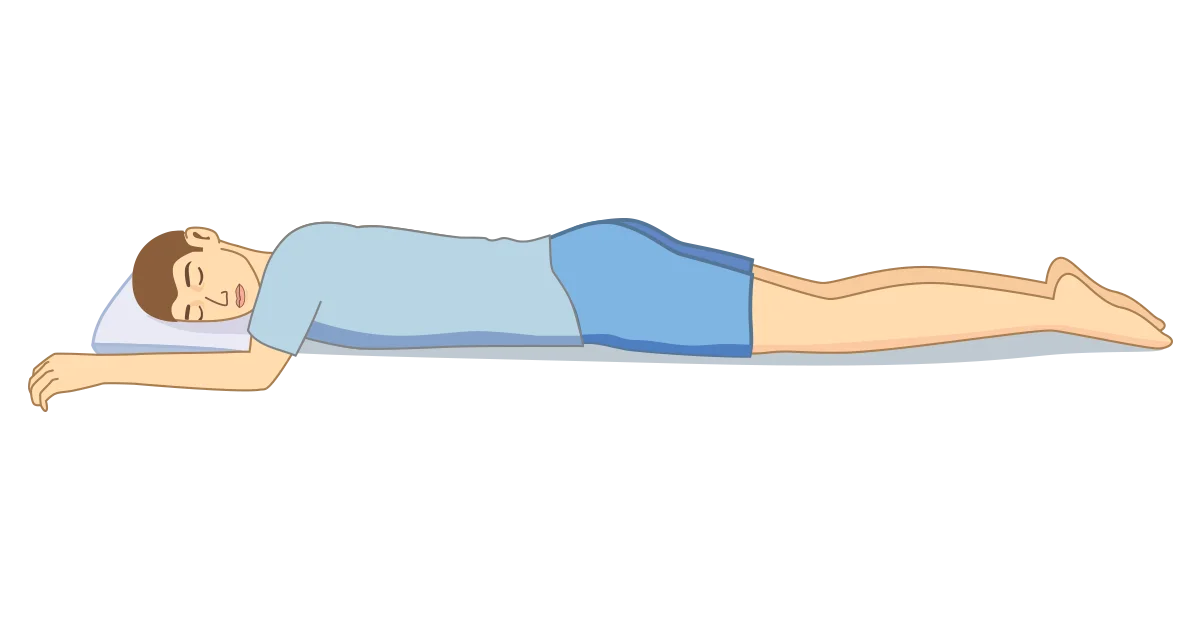
Allah Hates This Sleeping Position, Please Avoid Sleeping Like This
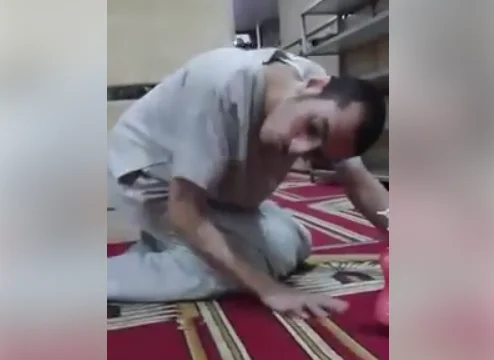
young man who is seriously ill but still cleaning the mosque will melt your heart
![Online Zakat Calculator [year]: Ramadan [year] 14 Online Zakat Calculator](https://theislamicinformation.com/wp-content/uploads/2021/03/Online-Zakat-Calculator.jpg.webp)
Online Zakat Calculator 2024: Ramadan 2024
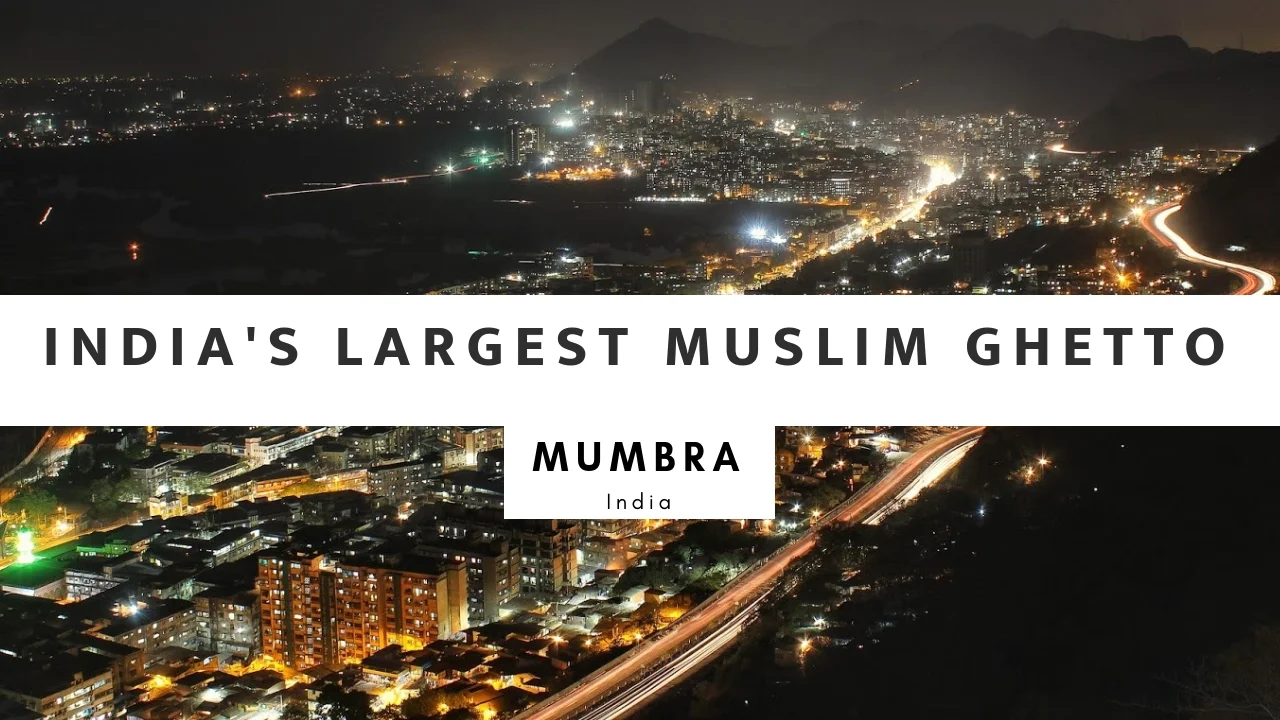
How 0.9 million Muslims In Mumbra Faces Discrimination and Oppression
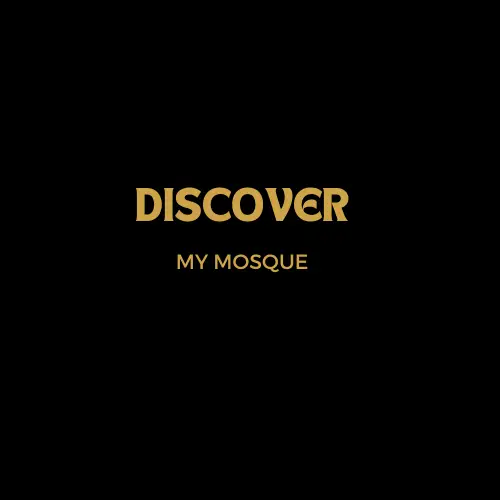
Discovermymosque
Virtual tours.
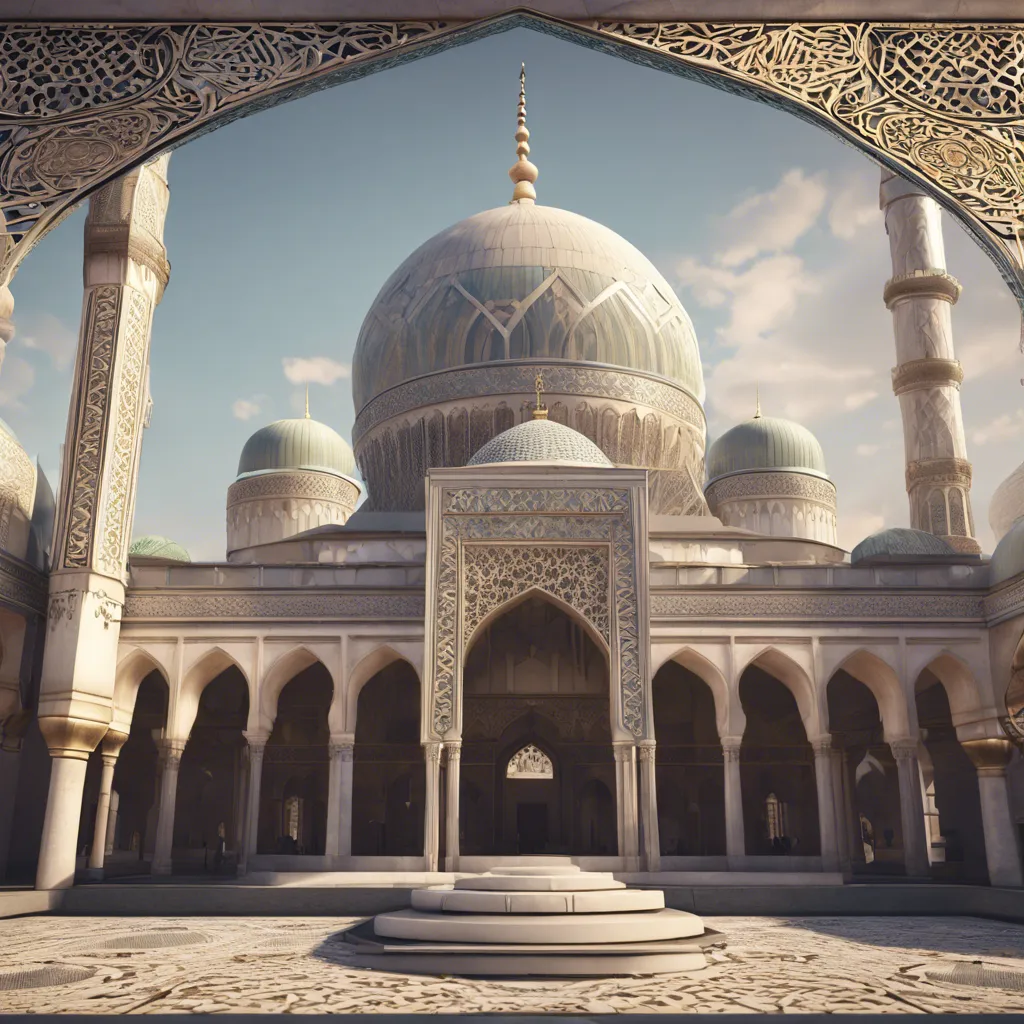
Description
At Discovermymosque, we offer immersive virtual tours of some of the world’s most beautiful and iconic mosques. Our virtual tours provide a unique opportunity to explore the intricate details and stunning architecture of these holy places from the comfort of your home.
Discover our futures destinations

User testimonial
- Immersive Virtual Tours
- Stunning Photographs
- Informative Content
- Multilingual Chatbot Support
- Reliable Ongoing Support
Jessica Simon
Key concepts, user testimonial.
- Achieve more in Life

Shah Jahan Mosque
Shah jahan mosque woking.
The Shah Jahan Mosque in Oriental Road, Woking, England, is the first purpose-built mosque in the United Kingdom. Built in 1889, it is located 30 miles southwest of London. It is a Grade I listed building. Navigate around the Mosque in a truly immersive 360 manner.
This website uses cookies. By continuing to use this site, you accept our use of standard cookies. Learn more

Step Inside the Muhammad Ali Mosque in Cairo: A Virtual Tour
- February 15, 2023
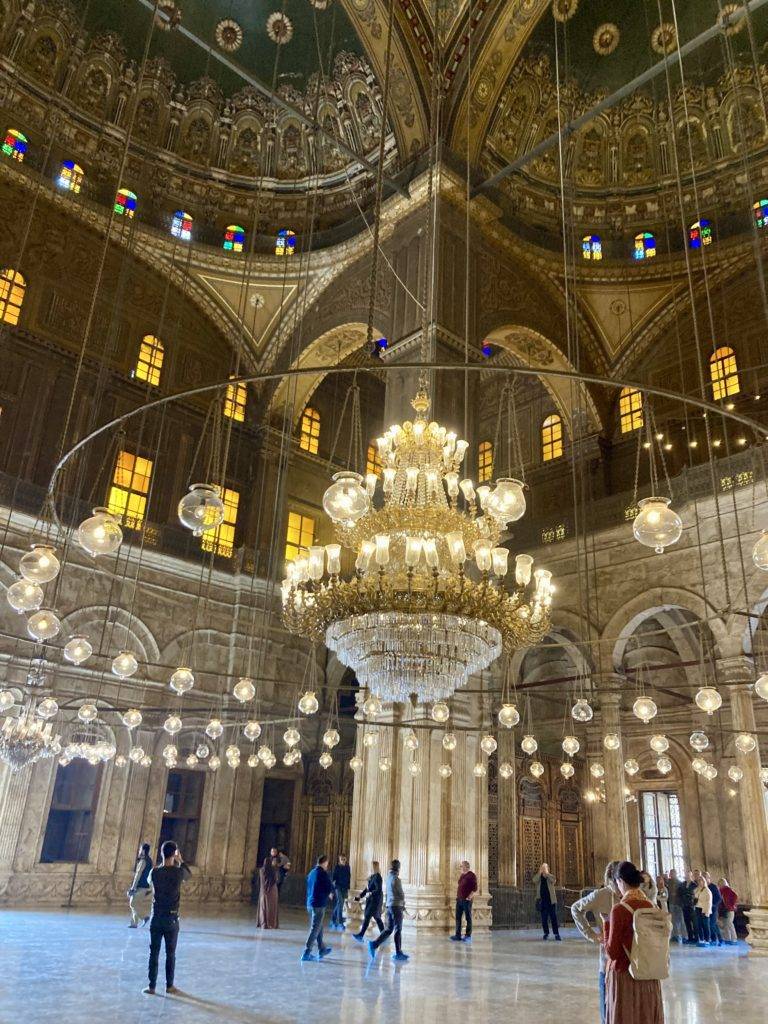
Get Exclusive Access to My Top 10 International Travel Tips - Subscribe Now!
Located in the heart of Cairo , Egypt , the Muhammad Ali Mosque is an incredible example of Islamic architecture. Built in the 19th century and named after a former ruler of Egypt , Muhammad Ali Pasha , the mosque is considered to be one of the most important landmarks in Cairo . Visitors will admire its majestic domes and minarets, exquisite interior design, and breathtaking views of the city . In this post, we’ll examine the mosque in more detail, examining its history, architecture, and tips for visiting. We’ll also give you a virtual tour of this location .
Table of Contents
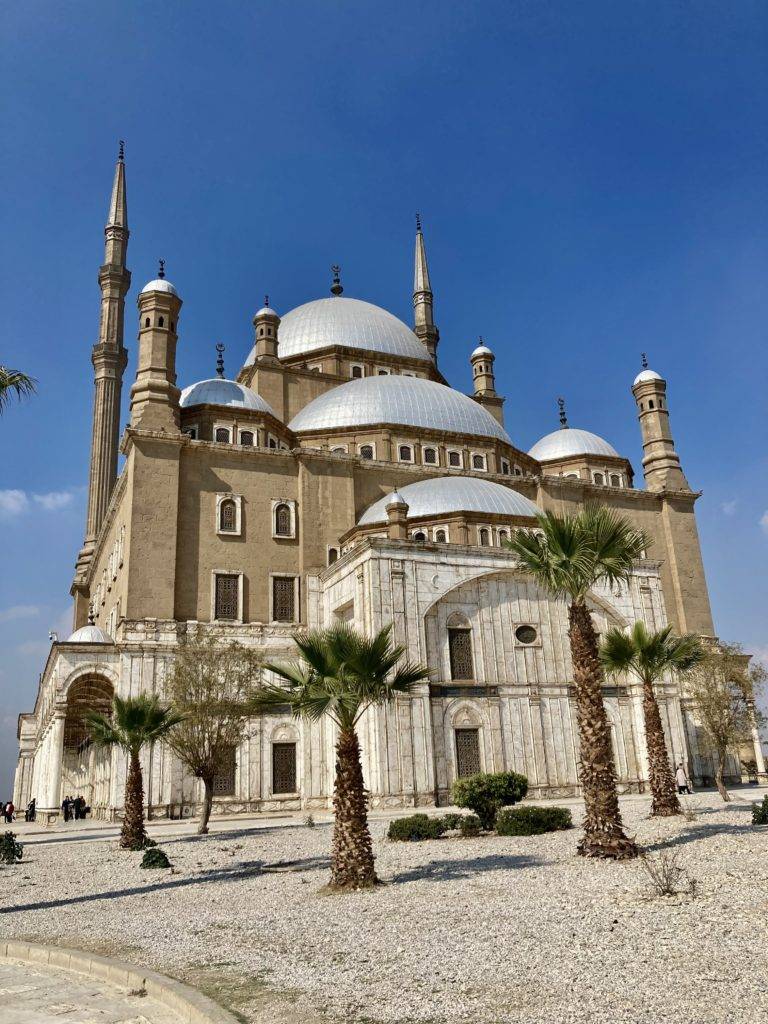
What is the Muhammad Ali Mosque?
The Muhammad Ali Mosque , also known as the Alabaster Mosque , is a famous religious and architectural masterpiece located in Cairo , Egypt . Built between 1830 and 1848 , the mosque stands as a testament to the cultural and historical significance of Islamic architecture. It was commissioned by Muhammad Ali Pasha, the ruler of Egypt at the time, who sought to create a grand mosque that would rival the famous mosques of Istanbul .
Why is the Muhammad Ali Mosque Famous?
The Muhammad Ali Mosque is famous for several reasons. Its impressive design blends elements of Ottoman and Islamic architecture by featuring elegant domes, tall minarets, and exquisite details. The mosque’s location on the Citadel of Cairo adds to its fame, offering stunning views of Cairo’s skyline .
Today, the Muhammad Ali Mosque attracts visitors from around the world who come to admire its beautiful architecture and interior, as well as appreciate the panoramic views of the surrounding area. It stands as an iconic landmark in Cairo , a symbol of Egypt’s rich cultural heritage, and a testament to the grandeur of Islamic art and architecture .
Where is the Muhammad Ali Mosque?
The Muhammad Ali Mosque is located in Cairo , Egypt . It was built on the Citadel of Cairo , a historic Islamic fortress that overlooks the city. Situated in the northeastern part of Cairo’s city center, the mosque offers panoramic views of the surrounding area, including the Nile River and the busy streets of Cairo . Its prominent location and impressive architecture make it a significant landmark and a popular attraction for both locals and visitors.
How to Get to the Muhammad Ali Mosque
The most convenient way to get to the Muhammad Ali Mosque is by taking a taxi or using a ride-hailing service . You can find taxis everywhere in Cairo. Uber is also very common. You won’t have to worry about directions as every driver will know how to get there .
By public transport
You can also take a local bus to the Citadel of Cairo . Look for buses that are headed towards Salah Salem Street or the Citadel , and tell the driver that you want to get off at the Muhammad Ali Mosque . Bus tickets generally cost around 10 pounds (about $.30 USD).
Another option to reach the Muhammad Ali Mosque is by utilizing Cairo’s metro system . Take Line 2 and get off at the Sadat station . From there, you can hire a taxi or a local bus to reach the Citadel of Saladin. I don’t recommend trying to walk from this metro station (like I did) because it takes about an hour and is along the highway .
Via guided tour
If you want to have everything handled for you, consider taking a guided tour. You can find these everywhere you look, from hotels to other famous landmarks. I recommend checking Tripadvisor .

History of the Muhammad Ali Mosque
When was the muhammad ali mosque built.
The construction of the Muhammad Ali Mosque took place between 1830 and 1848 .
Why was the Muhammad Ali Mosque built?
The mosque was commissioned by Muhammad Ali Pasha , the ruler of Egypt at that time , with the purpose of commemorating the Ottoman-Turkish invasion of Egypt and honoring his eldest son who had passed away .
Architectural influence and design
The mosque’s architectural style is a fusion of Ottoman, Mamluk, and modern elements . It was designed by Yousuf Bushnak , an architect who incorporated grandeur and intricate details into the structure. The mosque’s exquisite details and features reflect the wealth and power that Muhammad Ali possessed.
Controversy and opposition
Despite its grandeur, the construction of the Muhammad Ali Mosque faced opposition from religious leaders of the era. They believed the mosque was excessively lavish and deviated from the principles of modesty . Additionally, the use of expensive alabaster stone and the possible sourcing of limestone from the pyramids caused financial strain and further controversy.
Virtual Tour of the Muhammad Ali Mosque

Architectural features of the Muhammad Ali Mosque
Ottoman-inspired design.
The mosque’s awe-inspiring splendor has drawn comparisons to renowned Middle Eastern mosques like the Hagia Sophia and Sheikh Zayed Grand Mosque . It exemplifies the lavish style of Ottoman architecture , characterized by its impressive size and intricate detailing.
Impressive dome and minarets
At the heart of the mosque is a massive central dome , measuring 21 meters in diameter and rising 52 meters high . This impressive dome is supported by four colossal arches, surrounded by smaller domes and half-domes . Towering above the city, the mosque’s minarets reach an impressive height of 82 meters.
Exterior and hilltop location
Constructed on a raised hill, the Muhammad Ali Mosque commands attention with its elevated position. This gives visitors a remarkable vantage point to view the city below. The mosque’s exterior is crafted from white alabaster stone , which gives it an impressive aura when illuminated at night .
Ornate interior and decorations
Stepping inside, visitors are greeted with a lavishly decorated interior . The walls are adorned with verses from the Quran , while the floors are made of marble . Colorful stained glass windows surround the inside of the domes. Intricately patterned columns provide structural support, adding to the overall splendor. A notable centerpiece is the magnificent chandelier , generously gifted by the French government, suspended from the central dome.
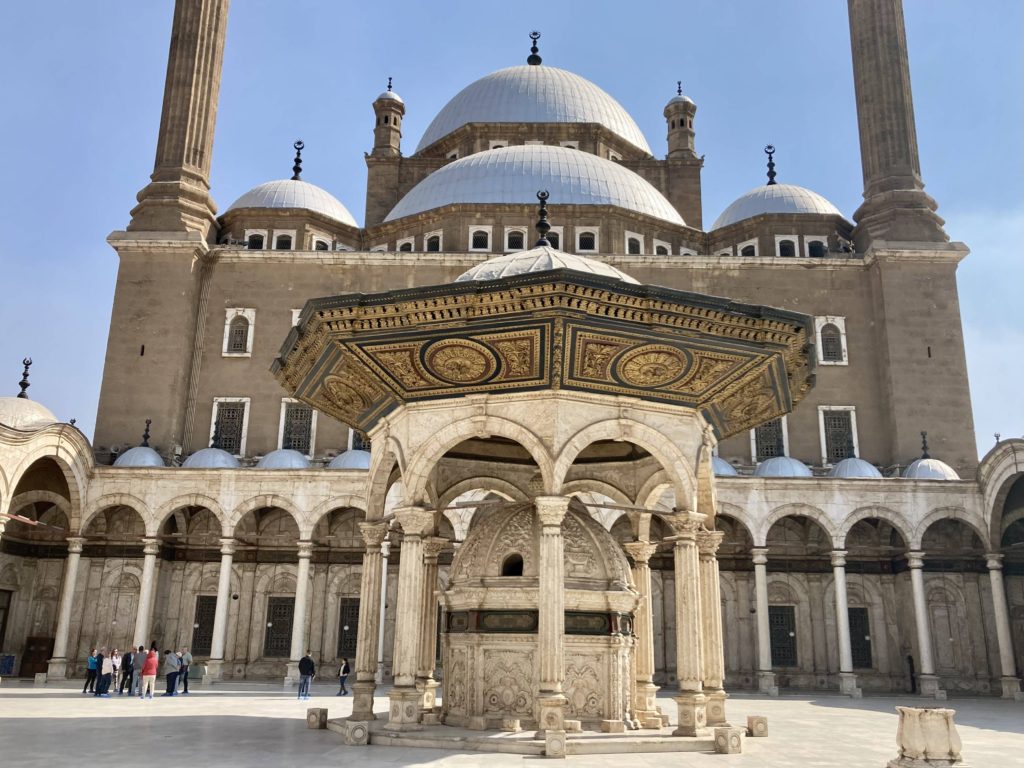
Muhammad Ali Mosque: FAQs
1. muhammad ali mosque entrance fee.
The cost to enter the mosque is 200 Egyptian Pounds (about $6.50 USD) . There are some exceptions and discounts available. For example, students only have to pay 100 Egyptian Pounds to enter.
2. Muhammad Ali Mosque opening hours
The mosque is open every day from 9 am to 5 pm. However, visiting the main prayer hall has specific hours : Non-Muslim visitors can access the prayer hall between 9 am and 11 am , as well as from 1 pm to 4 pm .
3. Muhammad Ali Mosque dress code
In order to enter the mosque, you must have your knees and shoulders covered. Women must have their hair covered with a scarf. Obviously, do not wear clothing that depict anything vulgar .
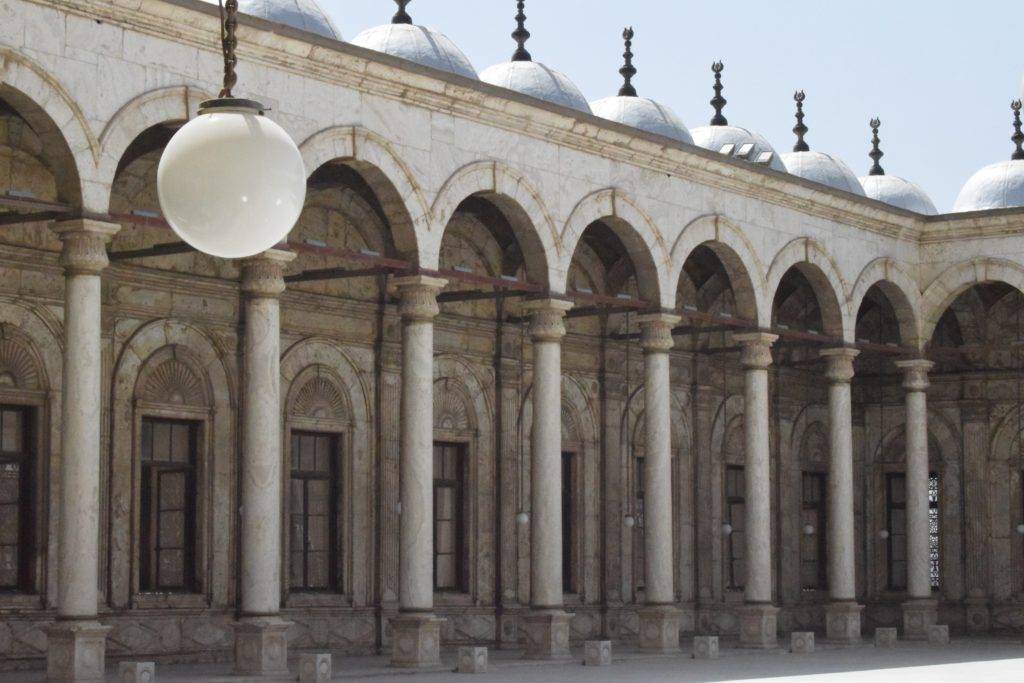
Tips for Visiting
Before you visit the Muhammad Ali Mosque , here are some tips to make your visit go more smoothly.
1. If you are a student, bring your ID
The cost to enter the mosque is 200 Egyptian Pounds (about $6.50 USD) . Students only have to pay 100 Egyptian Pounds to enter. I brought my ID just in case, but they did not even check .
2. Wear shoes with socks
You are not allowed to wear shoes on the mosque floors, so you can either pay a small fee to put bags over your shoes, or just carry your shoes with you . I’m all about saving money, so I just carried my shoes and it was no big deal. But I would not recommend you walk around barefoot, so bring socks .
3. Don't take a lot of baggage with you
All visitors must have their belongings scanned/searched before entering the mosque. I visited during a layover, so I had all of my belongings with me. I was still able to enter, but getting everything searched was a pain .
4. Bring water and snacks
There is a vendor next to the mosque selling food, water, and souvenirs. Predictably, everything is overpriced. Bringing refreshments from elsewhere will help you save money.
5. Download Google Translate or a similar app
If you do not know Arabic, having one of these apps will help you out a lot . You’ll be able to translate some of the signs at the mosque, ask people questions, etc. If you decide to get a tour guide, you can try to bargain down the price with some Arabic.
Need help planning your trip? Click HERE to find a variety of tools and information that can help make your travel planning more enjoyable.
Resources for your trip.
Book A Cheap Flight The first place to look for cheap flights is Skyscanner . This website gathers information from different companies and websites around the world to find the best deals for you. One of their best features is the ability to see the cheapest day to fly each month. Google Flights is another excellent resource.
Book A Place To Stay Booking.com is my go-to website for booking accommodations. They consistently have some of the best prices for hotels and frequently have deals. For hostels, I use Hostelworld . If you specifically want to rent a home, check out AirBnB or Vrbo .
Looking For A Tour? The best resource for looking up tours is GetYourGuide . This company will make planning your itinerary a breeze. For budget travelers , I recommend looking up available tours here and trying to organize them yourself to save some money.
Use Your Phone Abroad Whenever I travel abroad, I use Airalo . This is a company that offers eSIM services via a phone app. It is very convenient and you won’t have to worry about swapping SIM cards out of your phone. You can pay a few dollars for plans that range from 1 week to 1 year. Use the Promo Code ANDREW9734 for $3 off your first purchase!
How To Travel On A Budget? Traveling on a budget is my specialty. Check out my post on Traveling Internationally With Only A Personal Item . For other ideas on saving money while traveling, check out my ebook The World Is Yours: How to Afford International Travel on a Budget .
Follow our Social Media!
Categories , africa asia central america/caribbean europe middle east north america oceania south america, featured posts.
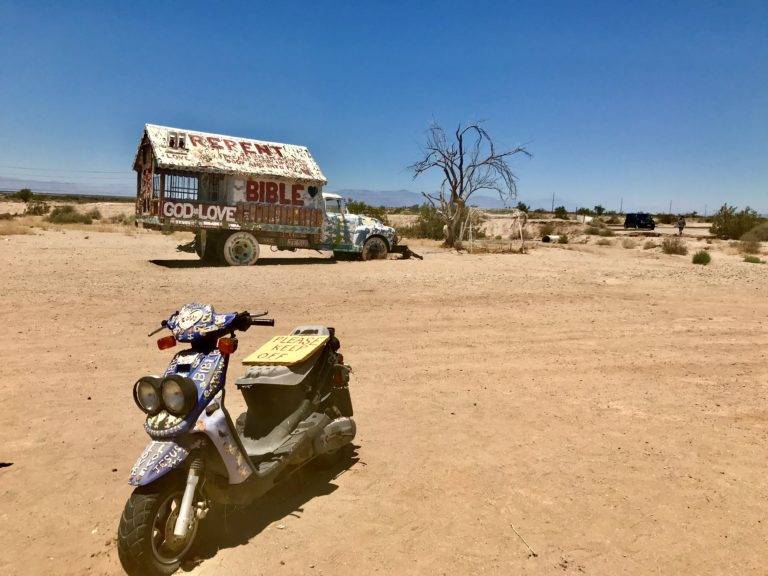
Discovering Slab City: An Off-Grid Community in the California Desert
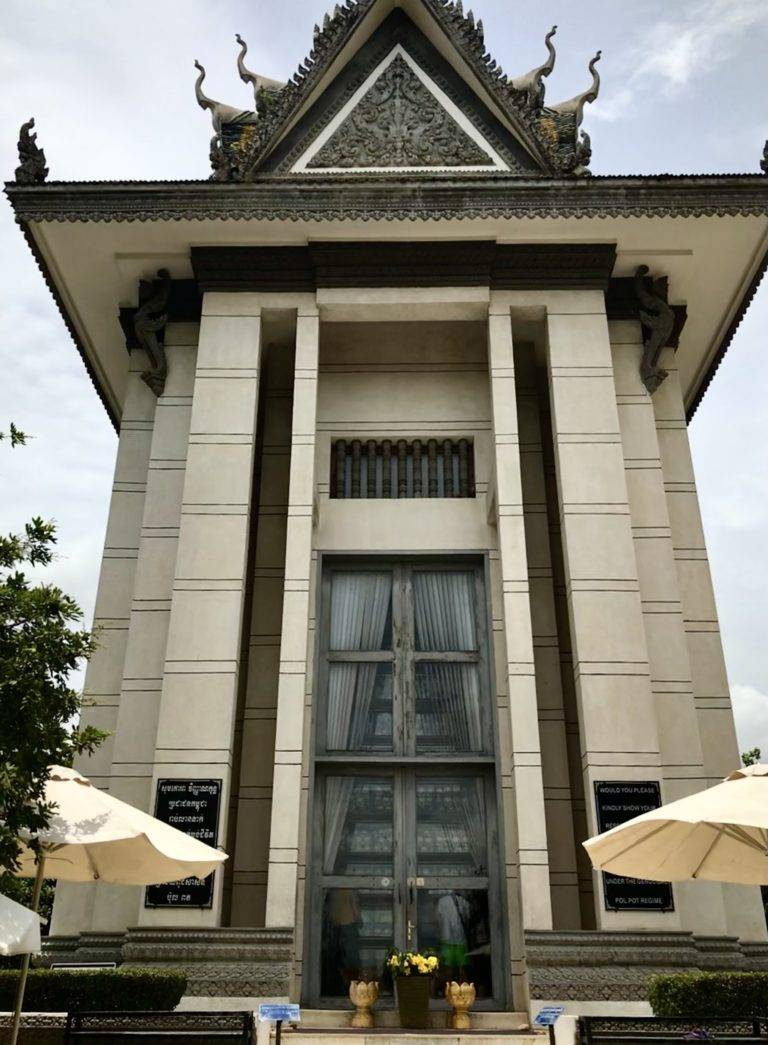
Visiting Cambodia’s Killing Fields at Choeung Ek
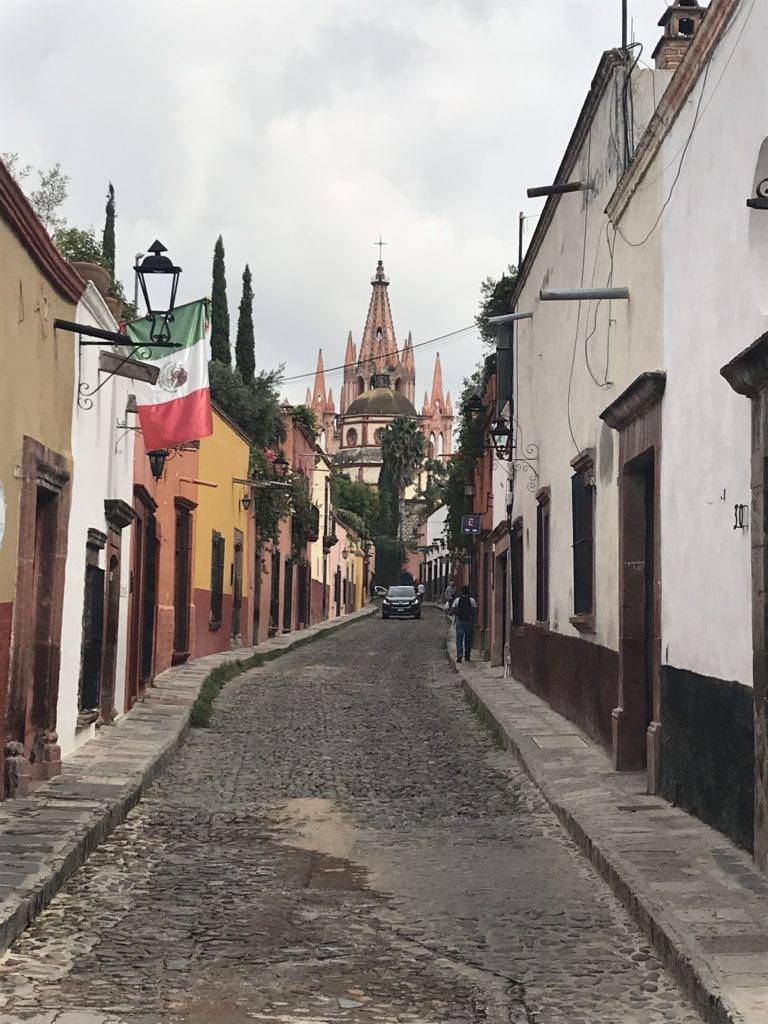
How Mexico Got Its Name

Ultimate Guide for Traveling Between Tashkent and Osh

Ciudad del Este, Paraguay: South America’s Largest Black Market
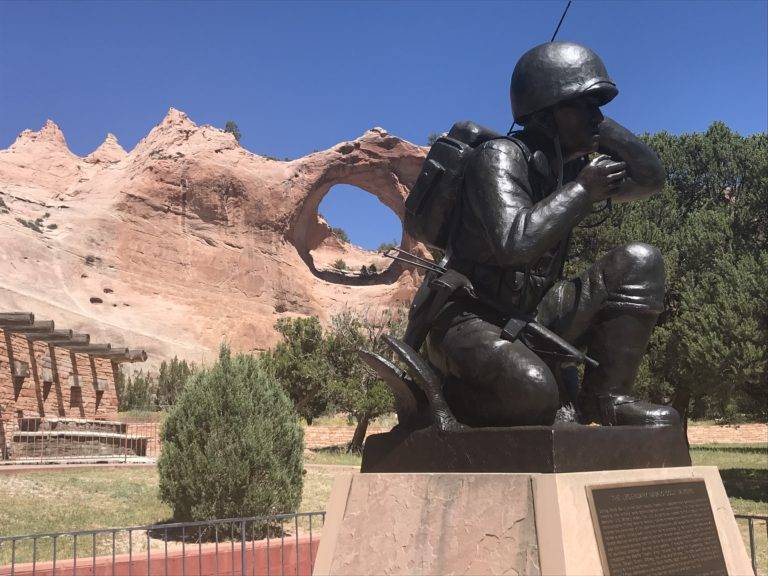
Window Rock and the Code Talker Monument

How to Get From Cebu City to Moalboal on a Budget
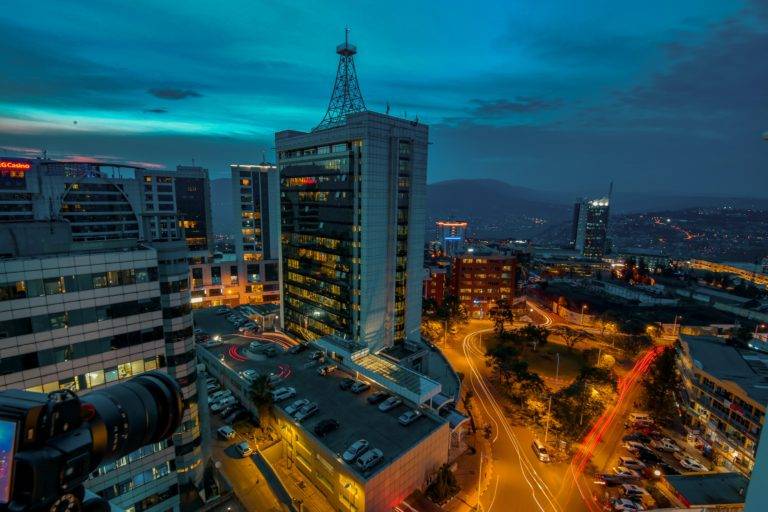
Kigali on a Budget: A Guide to Rwanda’s Capital City
Subscribe to Get Updates on New Blog Posts!

Andy Alcala
Hey there! I'm a travel enthusiast always seeking new adventures. I've visited over 70 countries, mostly in Africa, Latin America, and Asia. I prefer to travel off the beaten path, where I've discovered hidden gems and authentic cultural experiences that are often overlooked by most travelers. I look forward to sharing my stories with you!
Get Exclusive Travel Guides!
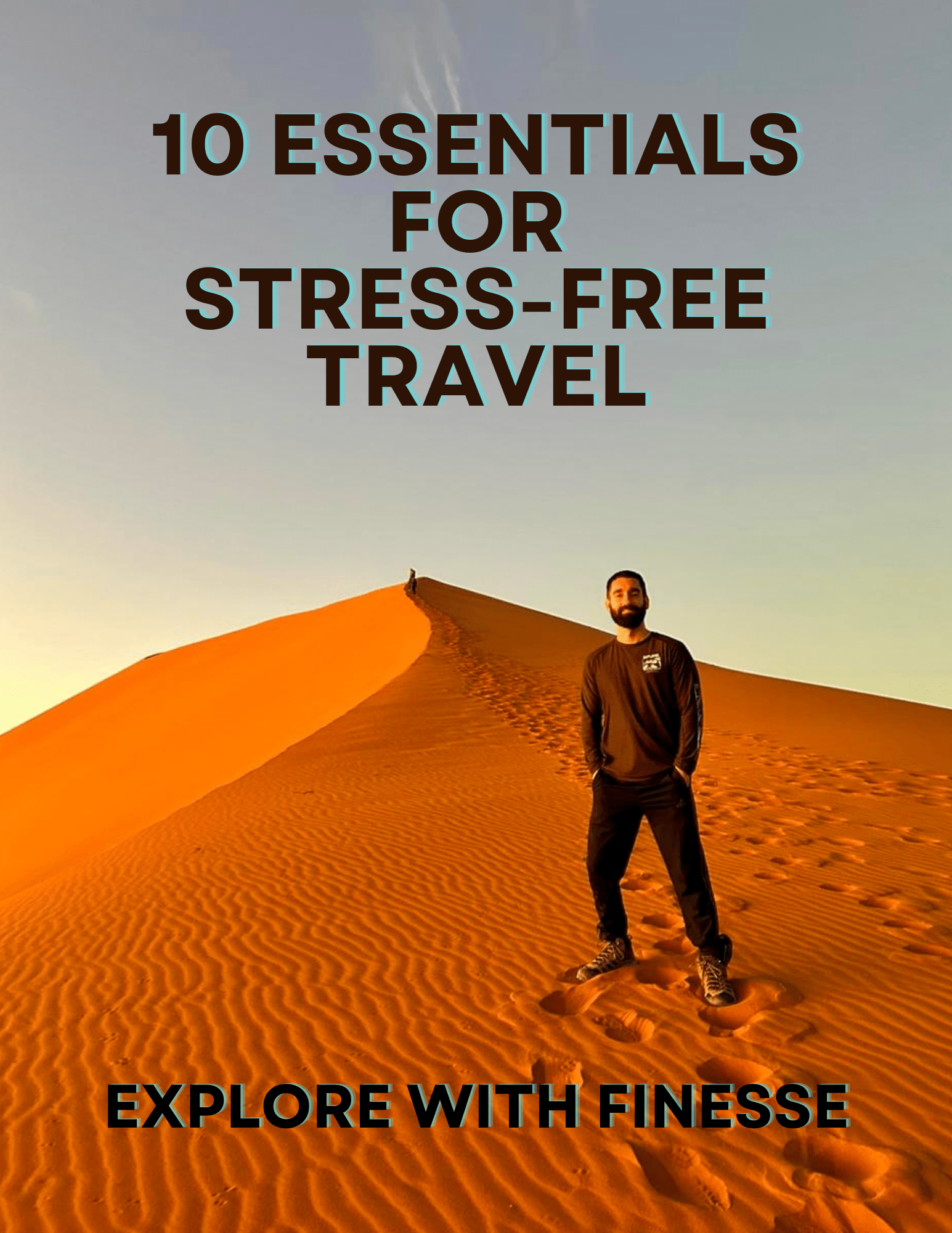
Get access to subscriber-only travel resources, giveaways, and blog updates that will transform the way you plan and experience your adventures.
*We keep your data confidential!
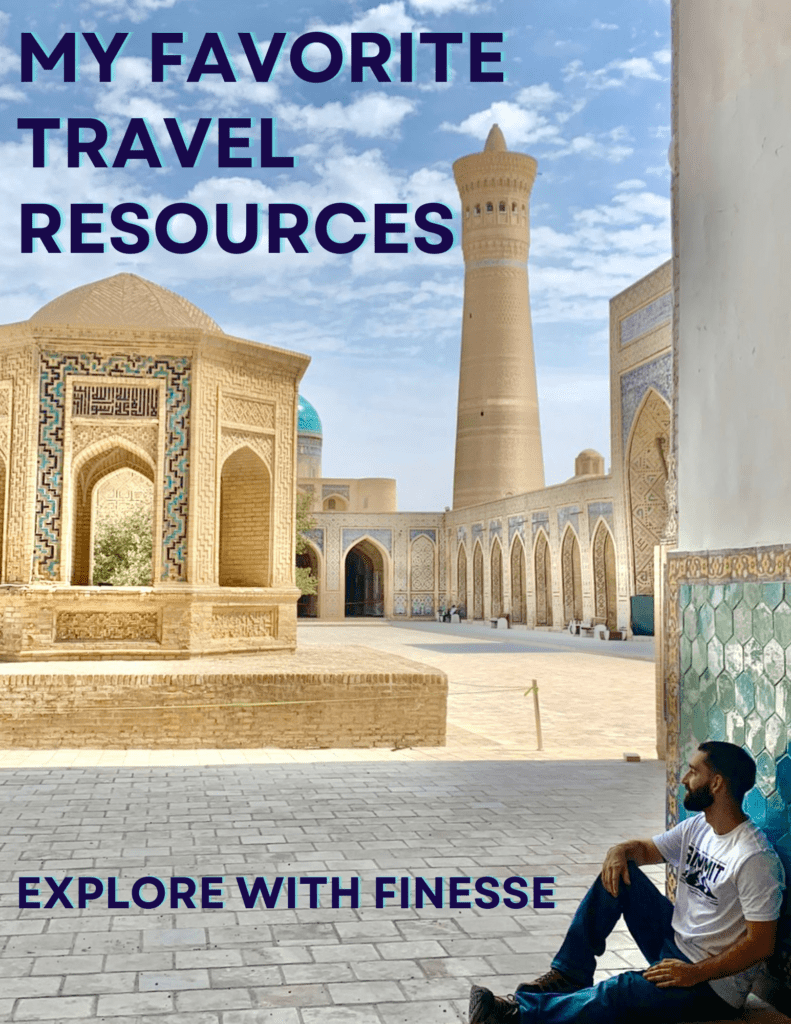
How we made al-Aqsa 360°
See the complete project here - http://aljazeera.com/aqsa360, the hardware and software used in the making of the project.
Why did we make al-Aqsa 360°?
The goal of al-Aqsa 360° was to provide a window into Jerusalem's holiest mosque - a place whose rich cultural heritage has also been a source of great controversy among Muslims and Jews.
By virtue of its location in the heart of occupied East Jerusalem, al-Aqsa Mosque compound is not accessible to all who may wish to visit. With this in mind, Al Jazeera decided to create a virtual tour that would allow viewers to explore the compound through a high-definition, online experience.
The picturesque Dome of the Rock - part of the al-Aqsa compound
The equipment
We were equipped with two VR video recording systems, including the handheld Ricoh Theta S, which is approximately the size of a small smartphone and is designed specifically for capturing 360° video and still footage. This camera is composed of two lenses on opposite sides of the device that each record in 180°. When the material from both lenses is stitched together, it generates a full 360°, 1080p HD video.
Left and centre: The rig containing six GoPros with tripod. Right: The Ricoh Theta S handheld camera
The second rig that we shot with was assembled by AJ Canvas . It comprises six GoPro Hero4 cameras mounted on each face of a 3D-printed, cubic housing. The field of view of each camera has a large overlap area with adjacent cameras, increasing the likelihood of seamless stitching of footage. Once stitched, the resulting product is a beautiful, ultra-high resolution, 4K video.
The GoPro rig also includes a mount to attach the camera system to a monopod with collapsible feet, making it a standalone device. While this is not the most ideal mounting solution in terms of stability or security, its distinct advantage can be seen in the final footage, as the area recorded directly beneath the VR rig shows just a very small footprint of the monopod’s feet. This footprint can easily be masked, or in our case, covered with the Al Jazeera logo.
The GoPro rig can be operated with a remote control that is synced to all six cameras simultaneously. As a result, the filming process is essentially one-touch recording. However, there can still be unpredictable, fraction-of-a-second discrepancies between each of the cameras as they start recording. To get around this, you must add a common point of reference - such as a loud clap, or a quick, deliberate rotation of the camera rig - to generate a marker around which the software will sync the footage from all six cameras.
The process
We shot this project over the course of two days. We began with the GoPro rig, setting it up in a variety of locations throughout al-Aqsa Mosque compound. We moved through the compound in the same fashion as any visitor might: We started on the western periphery, then moved up the stairs to the Dome of the Rock platform. We filmed in several locations around the Dome’s exterior, and inside the Dome itself.
Next, we filmed outside and inside al-Qibli Mosque (also known as al-Aqsa Mosque), before moving back to the compound’s edges and towards the exit. You can see the bright daytime sunlight turning into a calm evening sunset as we move through a day at the compound. Generating continuity in the footage was a challenge amid these changing light and weather conditions; at one point during our filming, a light rain started to fall, giving some of the shots a very different mood.
The next day, in order to capture Friday prayers, we equipped two people with the handheld Ricoh camera and asked them to walk around and inside the Dome of the Rock and al-Qibli Mosque, as if they were among the worshippers visiting the site that day. The result was a lower-quality, but more personal and active experience of al-Aqsa.
Left: The 4k resolution footage from the GoPro rig. Right: The lower-resolution footage from the more portable Ricoh camera
A different perspective
In a conventional narrative, the filmmaker is completely in control of the viewer’s experience. But with 360° filming, the viewer controls how he will interact with each scene. As such, it is important to pay attention to how the shots are set up.
Best practices dictate that the camera rig should be stable and set up at approximately human eye level. This allows the audience to become more deeply immersed in the scene from a comfortable human perspective, rather than a peculiar, distracting overhead or ground-level perspective.
You must also find the right distance to create a compelling scene. Because the cameras are relatively wide-angle, you need to be close enough to your primary subject to provide enough detail - but getting too close to the subjects around you, or having too much movement near the camera, can create other errors or aberrations when it comes to stitching the footage together. Some of this can be smoothed out through the editing process, but only to a certain point.
The carry bag for all the equipment
Key challenges
The primary difficulty with the GoPro rig was that it was necessary to set this up as a freestanding device and then move far enough away from it to avoid being captured in the shot - yet still close enough to monitor the shot. In some shots, if you look closely, you can catch glimpses of Megan or Wojtek in the background, as this was not entirely unavoidable in some areas of the compound.
In addition, there is the issue of human error and interruption. The camera rig generates a bit of an odd spectacle - a ball of blinking lights on a tall stick. You don’t want the bulk of your footage to be groups of people milling about and poking at the lens, but because you have to position yourself at a relative distance from the camera, you cannot always be in control of what’s going on around it. As a result, we ended up filming shots that were several minutes longer than what we knew we would need, to ensure that we would have enough material to be able to cut out any major interruptions.
The biggest challenge we faced was the fragility of the camera system itself. It is mounted on a small, light base, and if someone is not paying attention, they can easily walk into it, sending it crashing to the ground. The same could be achieved by a light wind, as we unfortunately discovered.
About midway through our day of filming, after we had set up the rig and walked away, the wind picked it up and sent it smashing into the ancient pavement, cracking the 3D-printed housing and sending pieces flying across the ground. Miraculously, the cameras themselves were undamaged and we were able to repair the housing with some electrical tape, but we were very cognizant for the rest of the day that another hit could have ended our project once and for all. In the future, we would use a heavier tripod or small sandbags around the base of the monopod.
The moment of impact
Also worth noting is the battery life. We started with fully charged batteries on the GoPro rig, but by midday, they had drained completely, as had our portable power pack. Luckily, an outlet was available inside the Dome of the Rock, and we recharged everything there. The battery on the Ricoh also drains quickly when it’s in use, and you can capture only around an hour of footage before the memory fills up - underscoring the need to have a computer on hand to copy off the footage, or to be very judicious about your shots.
Pulling it all together
At the end of a day of shooting, the fun of sorting and editing the footage begins.
For the Ricoh camera, the editing process is quite straightforward, as the footage is stitched together automatically and simply needs to be run through Ricoh’s software to generate the 360° images. The quality, however, is much lower than with the GoPro rig.
For the GoPro rig, after you finish shooting, you are left with six memory cards from six separate cameras that must be independently downloaded to your workstation. Diligence and meticulous organisation takes priority, as you must sort and label individual video files from each camera related to each specific shot into a single folder. A good tip for this is to ensure that the date and time on each camera is set correctly, so it is easier to identify which shots should be stored together.
The stitching process using Kolor Autopano Video Pro
Once the material was consolidated, we used the Kolor suite of stitching software to merge the six independent shots into one. Once the original footage was synced in Kolor Autopano Video, we moved over to Kolor Autopano Giga, which generates a reference panorama from still grabs within the videos. This maps how each image will be distorted and blended with the neighbouring camera’s footage, and how minor differences in exposure, colour and white balance will be accounted for, to ensure the video is as seamless as possible. This mapping, once saved, guides the video software through its process of stitching the full videos.
After the frames have been merged, it's time to render the high-resolution videos
Once rendered, the result was a conventional (if somewhat odd-looking) piece of 4K video, which we could then move over to a traditional video editor like Adobe Premiere. In Premiere, we cut and edited all of the videos into a sequence that we felt best replicated a tour of al-Aqsa, and added a voiceover track to point out the highlights of the compound and provide viewers with a more immersive experience.
Since the footage is extremely high-resolution, workstation hardware makes a significant difference both in terms of stitching and final edits. The best bet is to use a relatively powerful computer capable of handling such large files with ease (lots of RAM, an SSD drive off of which to work, and a powerful video card). A two-minute segment of video can take around an hour to fully stitch.
The video was edited on a high-end workstation
To complete the project, the following, applications were used:.
- Adobe Premiere for video editing
- Kolor AutoPano and Kolor Eyes for rendering and viewing the stitched videos
- Ricoh Theta software for the handheld videos
- Adobe Muse for building the mobile and desktop websites
- Photoshop for image resizing
- Illustrator for drawing the vector graphics
- Google Earth Pro for geospatial referencing
- SketchUp for a simple model of the al-Aqsa compound and dimensions
- Sublime text for editing code
Once brought into Premiere, it took around 30 minutes to render the seven-minute 4K video
Augmenting the experience
This project is our second undertaking in 360° storytelling. A lot of advancements have occurred since we launched our first project, Hajj 360 , in September 2015. One of the new fields includes augmenting the user's view with relevant material on-screen.
As part of the tour, we decided to include a 3D model of the al-Aqsa compound to give our viewers a sense of the environment that they would explore.
We decided that the easiest way to annotate important locations was to use the lens flare effect
Watch out for more interactive projects by following @AJLabs on Twitter.
By Megan O'Toole, Wojtek Arciszewski and Mohammed Haddad
Rather than just relying on the square-kilometre measurement of the compound, we annotated the compound on a 3D model with labels for the Dome of the Rock, al-Qibli mosque and the entire al-Aqsa compound (which is everything inside the walls of the compound)

Visit my Mosque
Resources for schools.
The VMM RE Teachers Resources pack is intended to support and empower Religious Education Teachers in organising and delivering school visits to Places of Worship such as mosques.

MOSQUES OFFERING SCHOOL TOURS
Want to organise a trip to a mosque that can accommodate school children? Check out our list of a wide range of mosques nationwide that offer school tours.
Explore Mosques in 360°
Want to show the exterior/interior of mosques to your pupils in class? We have a great collection of mosques in 360°

Teacher's Introduction Pack
Short introduction to using these resources and links to external resources

Organising a School Visit
Key tips and checklist for planning and delivering an in-person visit for pupils.

Activity Pack Templates
Download our activity packs for a mosque visit to ensure pupils get the most out of their visit.
Video Resource: What Happens Inside a Mosque?

A GUIDE JUST FOR YOU:
Visiting a mosque.
Download the VMM ‘Easy Guide to Visiting a Mosque’. Our guide explains what a mosque is and what to expect when visiting one, with some commonly asked questions.
Virtual Tours
Explore mosques in 360 °.
We’ve helped capture the exterior and interior of some mosques in the UK. These virtual tours are best viewed on a desktop computer.

Masjid-e-Khazra, Glasgow
Shah jalal mosque, cardiff, sheffield madina masjid, al-abbas islamic centre, birmingham, suleymaniye mosque, london, dar ul isra, cardiff, acknowledgements.
We would like thank a wide range of contributors who were involved in the development and review of these resources, including the National Association of Teachers of RE (NATRE), The Inter Faith Network (IFN), RE Matters, Theos Think Tank, Association for RE Inspectors, Advisers and Consultants (AREIAC), MCB National Council Members, Lancashire Council of Mosques, Islamic Society of Britain (ISB) and individual RE teachers and volunteers. We are also grateful to those who have provided funding for the completion of this resource work including Culham St. Gabriel’s Trust and individual donors.
Do you need more information? Contact us.
Call Us: 0845 26 26 786
Prophet's Mosque
Prophet's mosque - 3d virtual tour.
Prophet's Mosque virtual tours can be started by clicking the preview window or by downloading the stand-alone versions. Just drag the mouse to the direction you want to look. Use the scroll wheel to zoom at the details. Press F9 to get a list of the 3D sites you downloaded (residing in the same directory). To install the listed sites as a screensaver press F5 . Our advise is to install all the sites, including Prophet's Mosque , as a screensaver. When the screensaver starts, a random site is chosen and shown around automatically (this gives the impression of looking at a documentary in HD quality). To see the usage of other keys press F1 . Press Ecs to exit.
Al-Masjid al-Nabawi, often called the Prophet's Mosque, is a huge mosque situated in the city of al-Madinah, Saudi Arabia. As the final resting place of the Islamic Prophet Muhammad, it is considered the second holiest site in The Prophet's Mosque is the second holiest mosque in the world after al-Haram in Mecca. (Al-Aqsa in Jerusalem comes in third.) It is a major pilgrimage site and many people who perform the Hajj go on to al-Madinah before or after Hajj to visit the mosque.
The original mosque was built by Prophet Muhammad (s.a.w), next to the house where he settled after his journey to al-Madinah in 622 AD. The original mosque was an open-air building with a raised platform for the reading of the Qur'an. It was a rectangular enclosure of 30 m × 35 m (98 ft × 110 ft), built with palm trunks and mud walls, and accessed through three doors: Bab Rahmah to the south, Bab Jibril to the west and Bab al-Nisa' to the east. The basic plan of the building has since been adopted in the building of other mosques throughout the world.
Inside, Muhammad (s.a.w) created a shaded area to the south called the suffah and aligned the prayer space facing north towards Jerusalem. When the qibla (prayer direction) was changed to face the Kaaba in Mecca, the mosque was re-oriented to the south. The mosque also served as a community center, a court, and a religious school. Seven years later (629 AD/7 AH), the mosque was doubled in size to accommodate the increasing number of Muslims.
Abbasid Caliph al-Mahdi (775-785) replaced the northern section of Al-Walid's mosque between 778 and 781 to enlarge it further. He also added 20 doors to the mosque; eight on each of the east and west walls, and four on the north wall.
During the reign of the Mamluk Sultan Qalawun, a dome was erected above the tomb of Muhammad (s.a.w) and an ablution fountain was built outside of Bab al-Salam. Sultan Al-Nasir Muhammad rebuilt the fourth minaret that had been destroyed earlier. After a lightning strike destroyed much of the mosque in 1481, Sultan Qaitbay rebuilt the east, west and qibla walls.
During the reign of Ottoman Sultan Abdülmecid (1839-1861), the mosque was entirely remodeled with the exception of Muhammad's (s.a.w) Tomb, the three mihrabs, the minbar and the Suleymaniyya minaret. The precinct was enlarged to include an ablution area to the north. The prayer hall to the south was doubled in width and covered with small domes equal in size except for domes covering the mihrab area, Bab al-Salam and Muhammad's (s.a.w) Tomb. The domes were decorated with Qur'anic verses and lines from Qasida al-Burda (Poem of the Mantle), the famous poem by 13th century Arabic poet Busiri. The qibla wall was covered with glazed tiles featuring Qur'anic calligraphy. The floors of the prayer hall and the courtyard were paved with marble and red stones and a fifth minaret (al-Majidiyya), was built to the west of the enclosure.
After the foundation of the Kingdom of Saudi Arabia in 1932, the mosque underwent several major modifications. In 1951 King Ibn Saud (1932-1953) ordered demolitions around the mosque to make way for new wings to the east and west of the prayer hall, which consisted of concrete columns with pointed arches. Older columns were reinforced with concrete and braced with copper rings at the top. The Suleymaniyya and Majidiyya minarets were replaced by two minarets in Mamluk revival style. Two additional minarets were erected to the northeast and northwest of the mosque. A library was built along the western wall to house historic Qur'ans and other religious texts.
In 1973 Saudi King Faisal bin Abdul Aziz ordered the construction of temporary shelters to the west of the mosque to accommodate the growing number of worshippers in 1981, the old mosque was surrounded by new prayer areas on these sides, enlarging five times its size.
The latest renovations took place under King Fahd and have greatly increased the size of the mosque, allowing it to hold a large number of worshippers and pilgrims and adding modern comforts like air conditioning. He also installed twenty seven moving domes at the roof of Masjid Nabawi.
Architecture
As it stands today, the mosque has a rectangular plan on two floors with the Ottoman prayer hall projecting to the south. The main prayer hall occupies the entire first floor. The mosque enclosure is 100 times bigger than the first mosque built by Muhammad (s.a.w) and can accommodate more than half a million worshippers.
The mosque has a flat paved roof topped with 24 domes on square bases. Holes pierced into the base of each dome illuminate the interior. The roof is also used for prayer during peak times, when the 24 domes slide out on metal tracks to shade areas of the roof, creating light wells for the prayer hall. At these times, the courtyard of the Ottoman mosque is also shaded with umbrellas affixed to freestanding columns. The roof is accessed by stairs and escalators. The paved area around the mosque is also used for prayer, equipped with umbrella tents.
Plans for future buildings around the Prophet's Mosque.
The north facade has three evenly spaced porticos, while the east, west and south facades have two. The walls are composed of a series of windows topped by pointed arches with black and white voussoirs. There are six peripheral minarets attached to the new extension, and four others frame the Ottoman structure. The mosque is lavishly decorated with polychrome marble and stones. The columns are of white marble with brass capitals supporting slightly pointed arches, built of black and white stones. The column pedestals have ventilation grills that regulate the temperature inside the prayer hall.
This new mosque contains the older mosque within it. The two sections can be easily distinguished: the older section has many colorful decorations and numerous small pillars; the new section is in gleaming white marble and is completely air-conditioned.
The open courtyard of the mosque can be shaded by folded, umbrella-like canopies.
Ar-Rawdah an-Nabawiyah
The heart of the mosque houses a very special but small area named ar-Rawdah an-Nabawiyah, which extends from Muhammad's (s.a.w) tomb to his pulpit. Pilgrims attempt to visit and pray in ar-Rawdah, for there is a tradition that supplications and prayers uttered here are never rejected. Entrance into ar-Rawdah is not always possible (especially during the Hajj season), as the tiny area can accommodate only a few hundred people. Ar-Rawdah has two small gateways manned by Saudi police officers. The current marble pulpit was constructed by the Ottomans. The original pulpit was much smaller than the current one, and constructed of palm tree wood, not marble. Ar-Rawdah an-Nabawiyah is considered part of Jannah (Heaven or Paradise).
It is prescribed for the one who visits the mosque to pray two rak’ahs in the Rawdah or whatever he wants of naafil prayers, because it is proven that there is virtue in doing so. It was narrated from Abu Hurayrah that Muhammad (s.a.w) said: “The area between my house and my minbar is one of the gardens (riyaad, sing. rawdah) of Paradise, and my minbar is on my cistern (hawd)” Narrated by al-Bukhaari, 1196; Muslim, 1391.
And it was narrated that Yazeed ibn Abi ‘Ubayd said: “I used to come with Salamah ibn al-Akwa’ and he would pray by the pillar which was by the mus-haf, i.e. in the Rawdah. I said, ‘O Abu Muslim, I see that you are keen to pray by this pillar!’ He said, ‘I saw that the Prophet (peace and blessings of Allaah be upon him) was keen to pray here.’” Narrated by al-Bukhaari, 502; Muslim, 509.
Source: wikipedia
- Mosque
- Tomb
- Palace
- Museum
- Bath
- Castle
- Tower
- House
- Square
- Park
- Nature
- Sacred
- Ancient
- Space
- Other
- Country: All
- City: All
- Türkçe | عربي | English
- ?
© www.3dmekanlar.com

IMAGES
VIDEO
COMMENTS
This "Visiting a Mosque: RE Teachers Resources" pack is intended to support and empower Religious Education (RE) Teachers in organising and delivering school visits to Places of Worship such as mosques. Additionally, during the COVID-19 pandemic, "in-person" visits to Places of Worship such as mosques were paused. As a result, signposting to "virtual" mosque tours has been included ...
About Press Copyright Contact us Creators Advertise Developers Terms Privacy Policy & Safety How YouTube works Test new features NFL Sunday Ticket Press Copyright ...
1st of 2 videos. Meet Hibba and Issa who take you on a tour around their local mosque in Leeds.Don't forget to watch the 2nd video: https://youtu.be/G6l52UO_...
Al-Masjid Al-Haram (Arabic: المسجد الحرام, The Sacred Mosque or The Grand Mosque) is in the city of Mecca, Saudi Arabia. It is the largest mosque in the world and surrounds one of Islam's holiest places, the Kaaba. Muslims face in the direction of the Kaaba while performing Salat. One of the Five Pillars of Islam requires every Muslim to perform the Hajj pilgrimage at least once ...
The mosque is open to the public for prayers, and anyone can visit.What they'll find — as you can see in this recent tour video — is ugly green carpeting covering the floor, and screens, panels, and plywood obscuring the Byzantine Christian art. (The same thing was done in the smaller Hagia Sophia in the city of Trabzon.)
Experience Islam's third holiest site in more detail than ever before through this 4K, ultra-high definition experience. Millions of feet have walked the gro...
To go full screen: Desktop: Right click on it and click "full screen". Mobile: Long press the video and tap "full screen". Feel the spirituality of the place, and get a better understanding of its significance to millions of Muslims worldwide. Join us on a virtual reality tour of Masjid an-Nabawi, and experience the beauty and majesty ...
At Discovermymosque, we offer immersive virtual tours of some of the world's most beautiful and iconic mosques. Our virtual tours provide a unique opportunity to explore the intricate details and stunning architecture of these holy places from the comfort of your home. Discover our futures destinations
The Shah Jahan Mosque in Oriental Road, Woking, England, is the first purpose-built mosque in the United Kingdom. Built in 1889, it is located 30 miles southwest of London. It is a Grade I listed building. Navigate around the Mosque in a truly immersive 360 manner. Come and see inside the iconic Shah Jahan Mosque in Woking via our Google 360 ...
The tour will take you inside the Dome of the Rock and al-Qibli Mosque, and around many of the other religious landmarks on the compound's 14-hectare grounds. To experience al-Aqsa in 360 degrees, drag your mouse around the screen to navigate, or tilt your phone in the direction you'd like to view. Friday is the busiest day at al-Aqsa compound ...
This virtual guided tour goes beyond the surface, providing an in-depth exploration of Suleymaniye Mosque and its rich history. Delve into the fascinating history of the Suleymaniye complex, learning about its inception and evolution under the visionary architect Mimar Sinan.
The Muhammad Ali Mosque, also known as the Alabaster Mosque, is a famous religious and architectural masterpiece located in Cairo, Egypt. Built between 1830 and 1848, the mosque stands as a testament to the cultural and historical significance of Islamic architecture. It was commissioned by Muhammad Ali Pasha, the ruler of Egypt at the time ...
A visit to a mosque. The dome at the top of the mosque. A mosque is a place where Muslims come together to pray. Muslims are people who follow the religion of Islam. Muslims believe there is one ...
Join me on a virtual tour of one of Istanbul's most iconic landmarks - the Blue Mosque. With its stunning blue tiles and six minarets, this mosque is a true ...
With this in mind, Al Jazeera decided to create a virtual tour that would allow viewers to explore the compound through a high-definition, online experience. The picturesque Dome of the Rock - part of the al-Aqsa compound ... we filmed outside and inside al-Qibli Mosque (also known as al-Aqsa Mosque), before moving back to the compound's ...
Video summary. Twelve-year-old Kaisan visits the East London Mosque ("masjid" in Arabic) with his dad. It's a place to pray, study, and learn how to be a good human being from the iman (holy man ...
Boost your children's understanding of the features of a mosque with this KS1 video lesson. Benefits include:Age-appropriate content presented by Stephanie, one of our Twinkl teachersChildren will learn about what is found inside a mosqueEducational activities including designing a prayer mat and mosqueVideo pause, rewind and playback functions means children can take the learning at their own ...
What does a Mosque look like and what goes on inside? Lola and Zara make a visit to find out!This is the 3rd part in the series of cartoon animations created...
DAMASCUS • Umayyad Mosque. EDIRNE • Selimiye Mosque. AL-MADINAH • Masjid al-Quba. BURSA • Great Mosque. CAIRO • Mosque of Amr ibn al-As. CAIRO • Al-Azhar Mosque. ISTANBUL • Blue Mosque. CASABLANCA • Hassan II Mosque. CAIRO • Mosque of Ibn Tulun.
Video Resource: What Happens Inside a Mosque? A GUIDE JUST FOR YOU: VISITING A MOSQUE. Download the VMM 'Easy Guide to Visiting a Mosque'. Our guide explains what a mosque is and what to expect when visiting one, with some commonly asked questions. ... Virtual Tours. Explore Mosques in 360 ...
Prophet's Mosque - 3D Virtual Tour. Prophet's Mosque virtual tours can be started by clicking the preview window or by downloading the stand-alone versions. Just drag the mouse to the direction you want to look. Use the scroll wheel to zoom at the details. Press F9 to get a list of the 3D sites you downloaded (residing in the same directory). To install the listed sites as a screensaver press F5.